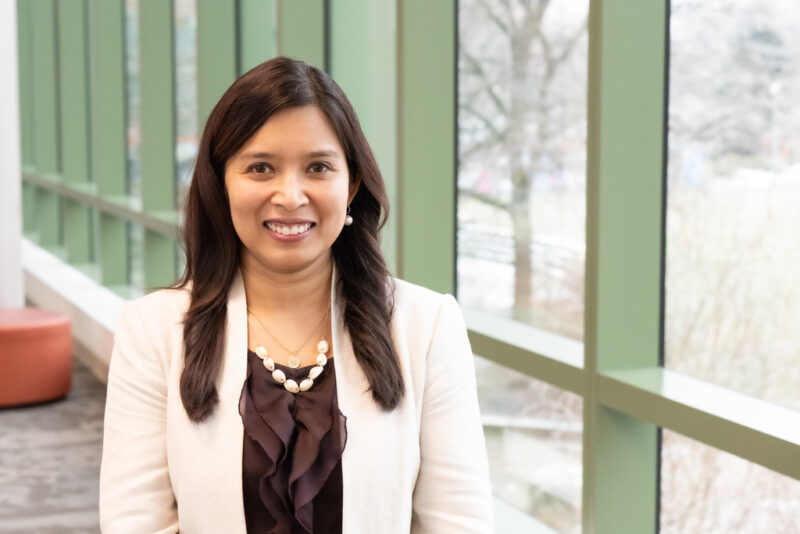
Dr. Prabi Rajbhandari
During the recent National Pediatric Hospital Medicine Conference held in Philadelphia in August, Dr. Prabi Rajbhandari, a pediatric hospitalist, was recognized for her study titled Linguistic Services for Hospitalized Children with Non-English Language Preference: A PRIS Network Survey.
The study was noted as a Top 10 Article, a prestigious accolade signifying its contribution to the field of pediatric hospital medicine in 2022. The study underwent an intensive selection process, encompassing a meticulous review of over a thousand articles published in relevant journals for the field throughout the previous year. This thorough evaluation is centered on qualities such as quality, originality, impact, and contribution to the advancement of knowledge within the field. Importantly, the study also achieved distinction by being named the best article in the domain of health equity within PHM at the same national conference.
Dr. Rajbhandari’ s inspiration for embarking on this research journey was sparked by her observations on the pediatric floors of Akron Children’s. It became apparent to her that numerous families spoke languages other than English and required interpreting and translating services during critical hospital phases like admissions, rounds, and discharges.
Despite the need, the availability of interpreters was not always assured, particularly in urgent scenarios. This prompted her to delve deeper and pose crucial questions: How frequently were physician-patient conversations devoid of interpretation? What were the barriers to using the services? How often were vital patient education materials left untranslated in the patient’s primary language? This led her to ponder the extent of this challenge nationally in other children’s hospitals.
In her quest to address this issue, Dr. Rajbhandari conducted a comprehensive study that delves into the heart of health care quality and equity. The results were published in the March 2023 issue of Hospital Pediatrics, a journal of the American Academy of Pediatrics. Joined by fellow researchers Dr. Alexander Glick from NYU, Miraides Brown from Akron Children’s, and Dr. Jonathan VanGeest from Kent State University, Dr. Rajbhandari, as lead author, surveyed 115 pediatric hospitalists nationwide through the Pediatric Research in Inpatient Setting (PRIS), a leading pediatric hospital-based medicine network.
A hospitalist frequently interacts with patients during various stages of their stay, yet having an in-person interpreter present at every interaction isn’t always feasible.
“That is what led us to ask, ‘What are other hospitals doing?’ Once you establish a baseline, you can build upon that,” Dr. Rajbhandari said.
The survey asked about the hospitalists’ practices of linguistic services, including verbal interpretation and written translation when caring for non-English speaking families.
With a response rate of 64 percent, hospitalists across the country reported that accessing services in a timely manner was the most common barrier.
Among the respondents, 64 percent said they “strongly agreed” or “somewhat agreed” with the statement that “They visited and gave updates more frequently to English-speaking families than to non-English speaking families,” revealing disparities in care.
While interpreters were used more often during admissions (65 percent) and discharges (57 percent), their utilization during rounds was only 40 percent.
Dr. Rajbhandari said she was not entirely surprised by her findings.
“Now we have numbers,” she said. “I feel a sense of pride in the fact that physicians acknowledge that they provide fewer updates to non-English-speaking families than those who speak English. It’s a truth we were aware of, and now it’s substantiated by the data.”
The implications of this study are significant, considering the possibilities of medical history being collected during the admission without an interpreter or the prospect of sending patients home with discharge instructions being handed over without translation.
The authors strongly advocate the need for focused improvement efforts that address cultural considerations, systems improvement, and workflow adjustments.
“No physician has ill intent,” said Dr. Rajbhandari. “But what do you do if you are rounding at 9 a.m. and the interpreter is only available at 3 p.m.?”
This scenario highlights the practical challenges that health care providers face to ensure effective communication and quality care for patients who speak a language other than English.
“Timeliness is the critical issue,” she said.
And, as with so much in modern life, technology can provide valuable solutions. Integrating video remote interpreters into workflow, making it user-friendly and leveraging health information technology could potentially emerge as one of the most effective approaches to overcoming language barriers and enhancing communication between health care providers and patients with diverse linguistic preferences.










